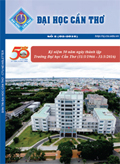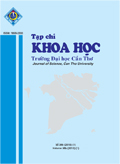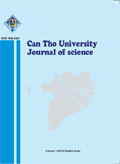Received 23 May 2018
Revised 12 Jul 2018 Accepted 03 Aug 2018 | | The study was conducted to determine the prevalence and antimicrobial resistance of Salmonella from pigs and farm environments in Vinh Long province from June 2017 to December 2017. Salmonella was isolated from 240 fecal samples and 640 environmental samples (feed, water, barn floor and wastewater) at household and pig farms. There were 76/880 (8.64%) positive samples with Salmonella. Among them, Salmonella was detected from 35/240 fecal samples (14.58%) which was higher than that from 41/640 environmental samples (6.40%). The prevalence of Salmonella in healthy pigs was (8.88%) lower than that of diarrheic pigs (61.54%). The Salmonella positive isolation rate from pigs in household farms was 20.20% (62/307) higher than that of pigs in commercial farms with 2.44% (14/573). Salmonella positive rate was increased by age; the highest rate was in sow with 37.50% (12/32 samples), following by growing pigs 12.16% (18/148 samples) then post weaning pigs 10.34% (3/29 samples), and lowest rate was in suckling pigs 6.45% (2/31 samples). Salmonella isolation from pigs and environments were resistant to trimethoprim/sulfamethoxazole (64.47%), chloramphenicol (52.63%) and ampicillin 46.05%). The multidrug-resistant phenotypes (resisting against 2-7 antibiotics) were observed from 55/76 Salmonella isolates, such as Bt - Cl, Am – Bt – Ac and Am – Bt – Cl were the most frequent phenotypes. Besides, these strains were highly sensitive to ceftazidime (100%), levofloxacin (100%), colistin (96.86%), amikacin (97.37%), cefuroxime (97.37%), ofloxacin (96.05%), doxycycline (93.42%), gentamicin (92.11), streptomycin (89.47%), and following to tetracycline (75.00%), amoxicillin/clavulanic acid (75%) and ampicillin (53.95%). |
Antimicrobial resistance, environmental farm, pig, prevalence, Salmonella, Vinh Long |
Cited as: An, H.T.T. and Khai, L.T.L., 2018. The prevalence and antibiotic resistance of Salmonella spp. isolated from pigs and farm environments in vinh long province. Can Tho University Journal of Science. 54(Special issue: Agriculture): 26-33. |






